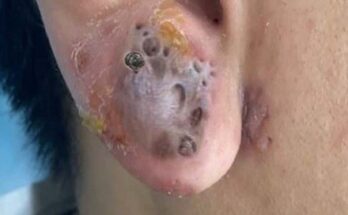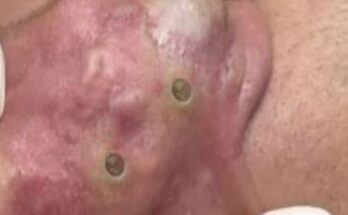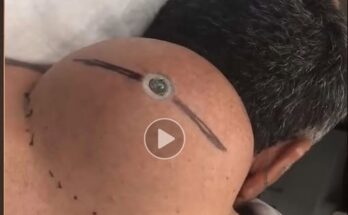While the causes are varied—ranging from hormones to genetics, diet, and stress—the journey to clearer skin has often been filled with trial and error.
Today, technology is revolutionizing how acne is diagnosed, treated, and managed, offering new levels of precision, comfort, and hope.
From AI-powered skin analysis to advanced laser therapies, innovation is changing the way we approach skin health.
The Rise of Smart Diagnosis
One of the first steps toward treating acne effectively is understanding its root cause. In the past, dermatologists primarily relied on visual inspections and patient histories to determine acne type and severity. Now, artificial intelligence has entered the field with impressive results. AI-based skin analysis tools can evaluate photographs of a person’s face and identify acne types such as blackheads, whiteheads, papules, or cysts. These technologies use large databases of dermatological images to train algorithms that can assess skin conditions accurately. They can even track changes over time, providing data that helps doctors and patients understand whether a treatment is working. Many skincare apps now use this technology, allowing users to receive initial assessments or progress updates from home before seeing a professional. This not only saves time but also increases access to early intervention.

Light and Laser Therapies
Light-based therapies have become a cornerstone of modern acne treatment. Blue light, red light, and laser technologies are being used in clinics and even adapted for home devices. Blue light therapy targets the bacteria that cause acne, while red light helps reduce inflammation and promote healing. When combined, these lights create a non-invasive treatment that can deliver noticeable improvements without the side effects of harsh topical medications. Lasers take this concept further by penetrating deeper layers of skin to shrink oil glands, reduce inflammation, and improve texture. Fractional laser technology, for instance, stimulates collagen production and helps fade acne scars, addressing both active breakouts and long-term marks. While these treatments used to be limited to professional dermatology offices, recent advancements have made them safer and more affordablefor broader use.
Personalized Skincare Through Data
Another exciting frontier in acne treatment is personalization. Technology now allows skincare to be tailored to an individual’s unique skin type, lifestyle, and biology. DNA testing and microbiome analysis can reveal how someone’s skin responds to certain ingredients, environmental factors, and hormonal changes. With this information, dermatologists and cosmetic scientists can design skincare regimens that target specific needs instead of relying on generalized solutions. Smart skincare devices are also gaining popularity. These handheld or app-connected tools can analyze hydration levels, oil balance, and pore health. They give real-time feedback and adjust product recommendations accordingly. Over time, users can see how their skin responds to climate changes, diet, or new treatments, creating a cycle of learning that leads to better long-term results.
Artificial Intelligence in Dermatology
AI is not only improving diagnosis but also helping doctors make more informed treatment plans. Dermatologists can use AI-driven software to simulate how the skin might respond to different therapies. This predictive capability reduces the guesswork and makes treatments more efficient. For example, if an AI model predicts that a patient’s acne is resistant to topical antibiotics, a dermatologist might opt for light therapy or hormonal treatments earlier. Teledermatology, powered by AI, is another major advancement. People living in remote or underserved areas can now consult licensed dermatologists virtually. Through high-resolution imaging and AI-assisted evaluations, doctors can provide accurate diagnoses and prescriptions without the patient needing to leave home. This accessibility is improving skin health outcomes globally, especially for those who might not otherwise have access to specialized care.
The Role of Nanotechnology
Nanotechnology has become one of the most promising innovations in skincare formulations. Traditional acne medications often struggle to penetrate the skin deeply enough to reach the source of inflammation. Nanoparticles—tiny carriers that transport active ingredients into deeper layers of the skin—help improve absorption and reduce irritation. For example, nanoparticles can deliver salicylic acid or benzoyl peroxide in controlled doses, minimizing dryness and redness. They can also help stabilize ingredients like retinoids, which are powerful but often degrade when exposed to air or light. This precise delivery not only enhances effectiveness but also makes treatments gentler for sensitive skin.
Regenerative Techniques and Skin Repair
Beyond controlling acne breakouts, technology is helping people heal from the scars left behind. Microneedling with radiofrequency is one such innovation that stimulates the skin’s natural repair process. The treatment uses fine needles and controlled heat energy to encourage new collagen and elastin production. The result is smoother, firmer skin with reduced acne scarring. Similarly, platelet-rich plasma (PRP) therapy, sometimes called the “vampire facial,” uses a person’s own blood components to regenerate skin cells. Though it sounds futuristic, it relies on a simple biological principle: using growth factors from platelets to promote healing. Combined with laser treatments or microneedling, PRP can significantly enhance results.
Sustainable and Ethical Innovation
As the skincare industry embraces technology, sustainability has become a key focus. Many new acne treatments are being developed with eco-friendly materials, cruelty-free testing methods, and biodegradable packaging. Advances in biotech also allow for lab-grown ingredients that mimic natural compounds without harming ecosystems. For example, lab-created squalane and peptides provide high-quality hydration and repair without relying on animal sources or overharvesting plants. Digital platforms also contribute to sustainability by reducing the need for physical packaging and shipping. Personalized skincare subscriptions that use refillable containers or virtual consultations are helping to lower the industry’s environmental footprint.
The Future of Acne Treatment
Looking ahead, technology will continue to blur the lines between medicine, cosmetics, and lifestyle. Smart mirrors may soon provide real-time skin analysis each morning, suggesting treatments or adjustments to diet and hydration. Wearable sensors could monitor hormonal fluctuations or stress levels to predict acne flare-ups before they occur. Biotechnology might even lead to topical probiotics designed to balance the skin microbiome naturally, keeping acne at bay without harsh chemicals. As these technologies evolve, the focus is shifting from simply treating acne to maintaining overall skin wellness. Preventive care, early detection, and long-term monitoring are replacing reactive approaches. The result is a more holistic understanding of skin health that empowers individuals to take control of their skincare journey with confidence.
A Human Touch in a High-Tech World
Despite all these advancements, one thing remains constant: the importance of professional guidance and human empathy. Technology can provide incredible tools, but the expertise of dermatologists and skincare specialists ensures that treatments are used safely and effectively. The best results come from blending innovation with compassion, understanding each person’s emotional and physical needs. Acne can affect self-esteem and confidence, but modern technology is changing that story. With new treatments that are smarter, gentler, and more accessible than ever, clearer skin is no longer just a dream—it’s becoming an achievable reality for millions around the world.



